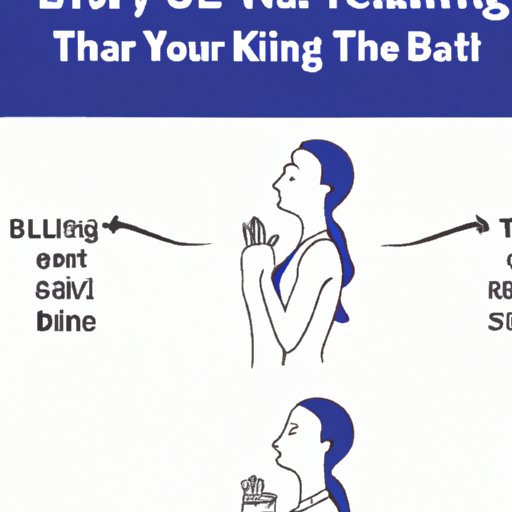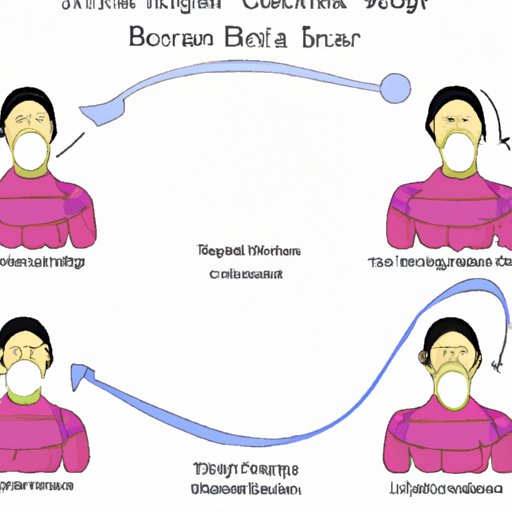Introduction
Breath-holding is the voluntary act of preventing air from entering or leaving your lungs. It takes practice and determination to be able to hold your breath for extended periods of time. With the right training, it is possible to increase your breath-holding time from a few seconds to several minutes. But what are the physiological limits of breath-holding, and how can you safely extend them? This article will explore these questions and provide tips for increasing your breath-holding time.
Exploring the Physiological Limits of Breath Holding
When you hold your breath, your body begins to experience certain physiological changes. The length of time you can hold your breath is determined by several factors, including your age, fitness level, and lung capacity. Generally, an untrained person can hold their breath for up to 30 seconds before feeling the need to take a breath. With proper training, this time can be extended to around 3 minutes.
The body’s response to breath-holding is a combination of oxygen deprivation and carbon dioxide buildup. When you hold your breath, oxygen levels in your blood decrease and carbon dioxide builds up in your lungs. This causes a reflex known as the “gasp reflex”, which triggers an urge to breathe after a certain amount of time.
Training for Longer Breath Holding Times
There are several exercises and techniques you can use to increase your breath-holding time. These include strengthening your diaphragm, increasing your lung capacity, and practicing controlled breathing techniques.
Exercises to strengthen your diaphragm and increase your lung capacity include deep breathing, belly breathing, and pursed lip breathing. Deep breathing involves inhaling slowly through your nose and exhaling through your mouth. Belly breathing involves taking slow, deep breaths while focusing on expanding your abdomen. Pursed lip breathing involves inhaling through your nose and exhaling through your mouth with your lips pursed together.
Controlled breathing techniques involve taking slow, steady breaths and gradually extending the duration of each breath. You can also practice progressive relaxation techniques such as muscle tensing and releasing and visualization. These techniques help to reduce stress and improve your ability to control your breathing.
It is important to start slowly and gradually increase your breath-holding time. Start by practicing your breathing exercises for several minutes each day and then work your way up to holding your breath for longer periods of time. Make sure to take breaks between exercises to prevent overexertion.

The Health Benefits of Controlled Breath Holding
In addition to improving your breath-holding time, controlled breath-holding has numerous health benefits. It can help to reduce stress and anxiety, improve cardiovascular health, and improve respiratory health. It can also help to boost your energy levels and improve your concentration.

Breath Holding Techniques to Increase Your Lung Capacity
There are several breath-holding techniques you can use to increase your lung capacity. One of the most popular techniques is Pranayama, an ancient Indian practice that focuses on using the breath to create balance and harmony in the body. Another technique is Box Breathing, which involves taking slow, steady breaths and visualizing a box shape as you inhale and exhale. Finally, there is Kapalabhati, a yogic breathing technique that involves rapid, shallow breaths.

Tips for Safely Prolonging Your Breath Holding Time
When attempting to increase your breath-holding time, it is important to do so safely. Make sure to warm up your body before attempting any breath-holding exercises. Monitor your heart rate and breathing during the exercise, and focus on relaxation techniques such as muscle tensing and releasing or visualization. If you feel any discomfort or dizziness, take a break and resume when you are ready.
Conclusion
Breath-holding is an activity that requires practice and determination to be able to hold your breath for extended periods of time. By understanding the physiological limits of breath-holding and following some simple training tips, you can safely extend your breath-holding time. There are also numerous health benefits associated with controlled breath-holding, such as stress relief, improved cardiovascular health, and improved respiratory health. With the right training and safety precautions, you can increase your breath-holding time and reap the many benefits of this practice.
(Note: Is this article not meeting your expectations? Do you have knowledge or insights to share? Unlock new opportunities and expand your reach by joining our authors team. Click Registration to join us and share your expertise with our readers.)
